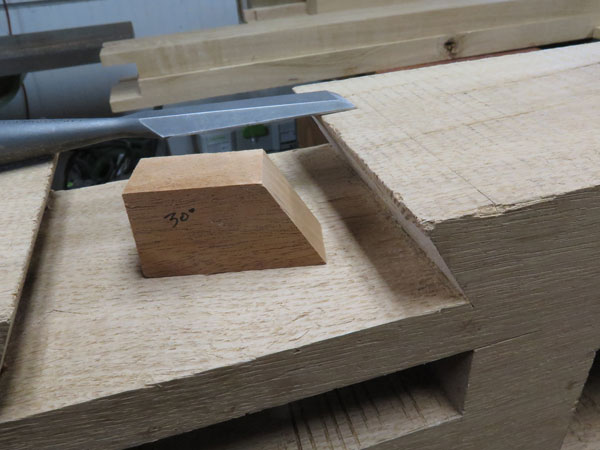We may receive a commission when you use our affiliate links. However, this does not impact our recommendations.
The sliding dovetail joint on the heavy French workbench is one of its most distinctive features. And if you mess it up, everyone will notice. So today I took an hour to pare the female part of the joint with some care to get a tight fit with the male part on the leg.
I cut in the dovetail walls for this bench with a circular saw. I usually do it by hand because it’s more accurate (though it’s slower). But I wanted to set up the circular saw for the other 16 bench builders at the French Oak Roubo Project so they had a choice between the two methods. So I tested the saw’s setup on my bench.
The tilt angle of the saw was about 1/2° degree off on my first cuts, maybe less. But that still has to be corrected. It might be tempting to make the correction on the male portion of the joint because its face grain is easier to pare. But I think that’s a mistake.
The layout lines for the joint are on the female part of the joint, so that’s where I prefer to work. I could attempt to transfer the marks to the male part of the joint, but that introduces a chance for error.
After sharpening a 3/4” chisel I tried to set a sliding bevel to the 30° angle and to get the tool’s acute tip into the corner of the joint. No dice. Its blade was too long.
So I made a quick paring block using some leftover stock. I sawed a 30° angle on the end of the block and then used that to see where the high spots were on the bevel inside the dovetail. The paring block actually turned out to be easier to use than a bevel gauge because its width made it easier to find high spots.
— Christopher Schwarz
If you are interested in building this bench, check out the revised edition of “Workbenches: From Design & Theory to Construction & Use,” which was released last month. It includes plans for this monolithic bench and tips on building it.
Here are some supplies and tools we find essential in our everyday work around the shop. We may receive a commission from sales referred by our links; however, we have carefully selected these products for their usefulness and quality.










Am I correct in assuming that the block is used to measure/verify the cut rather than as a jig to guide the chisel in paring the cut? Thanks.
Clever.